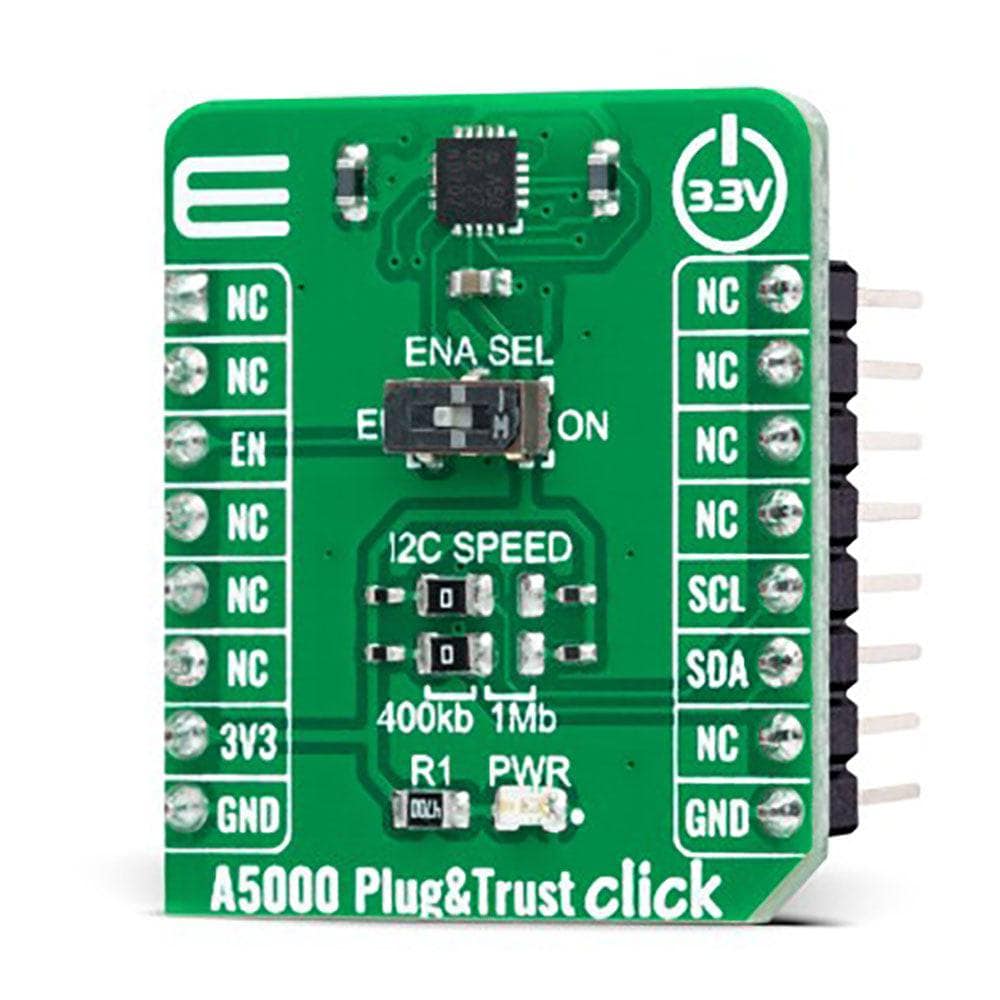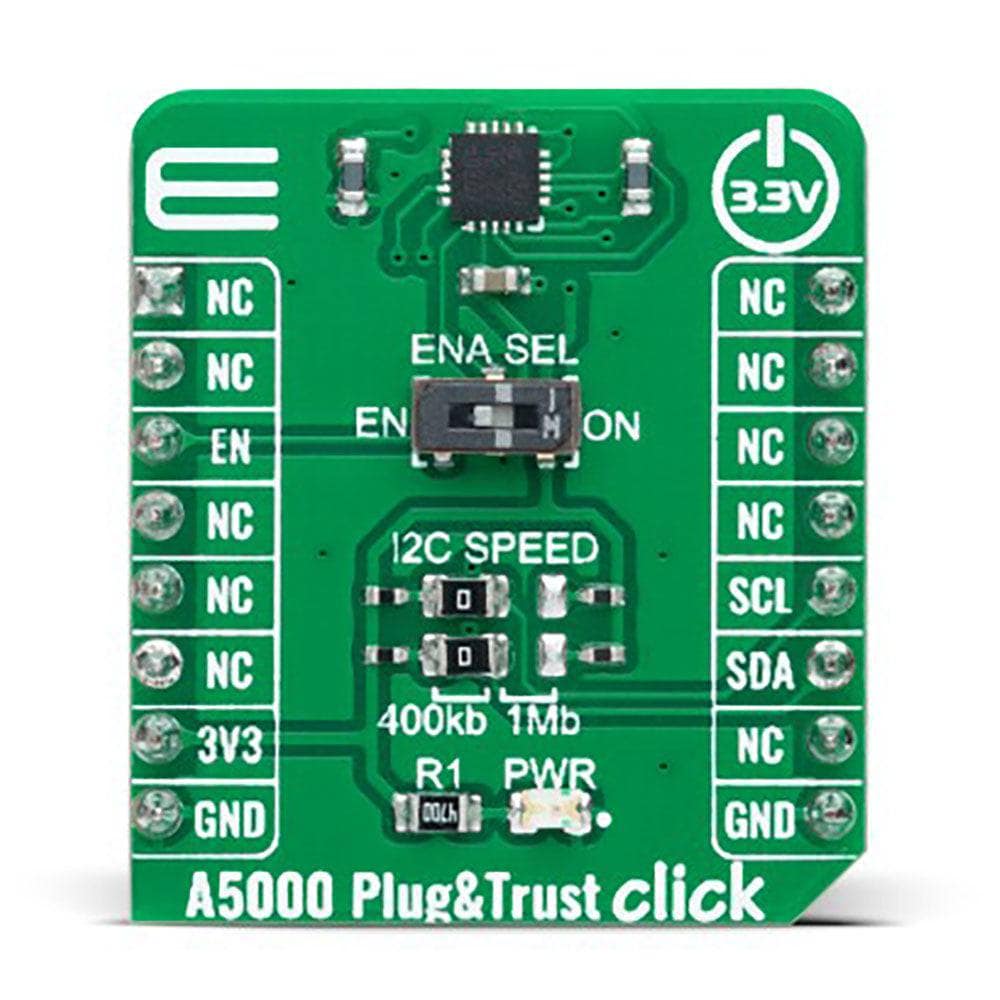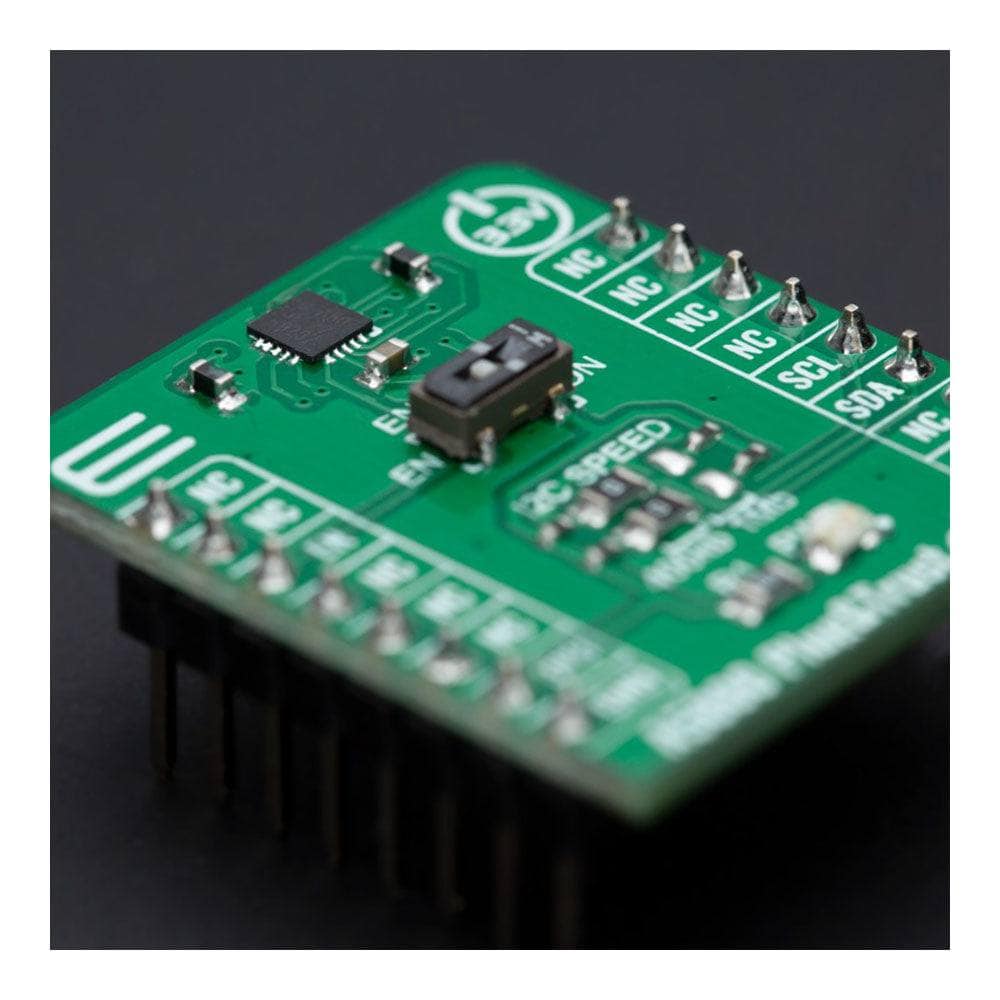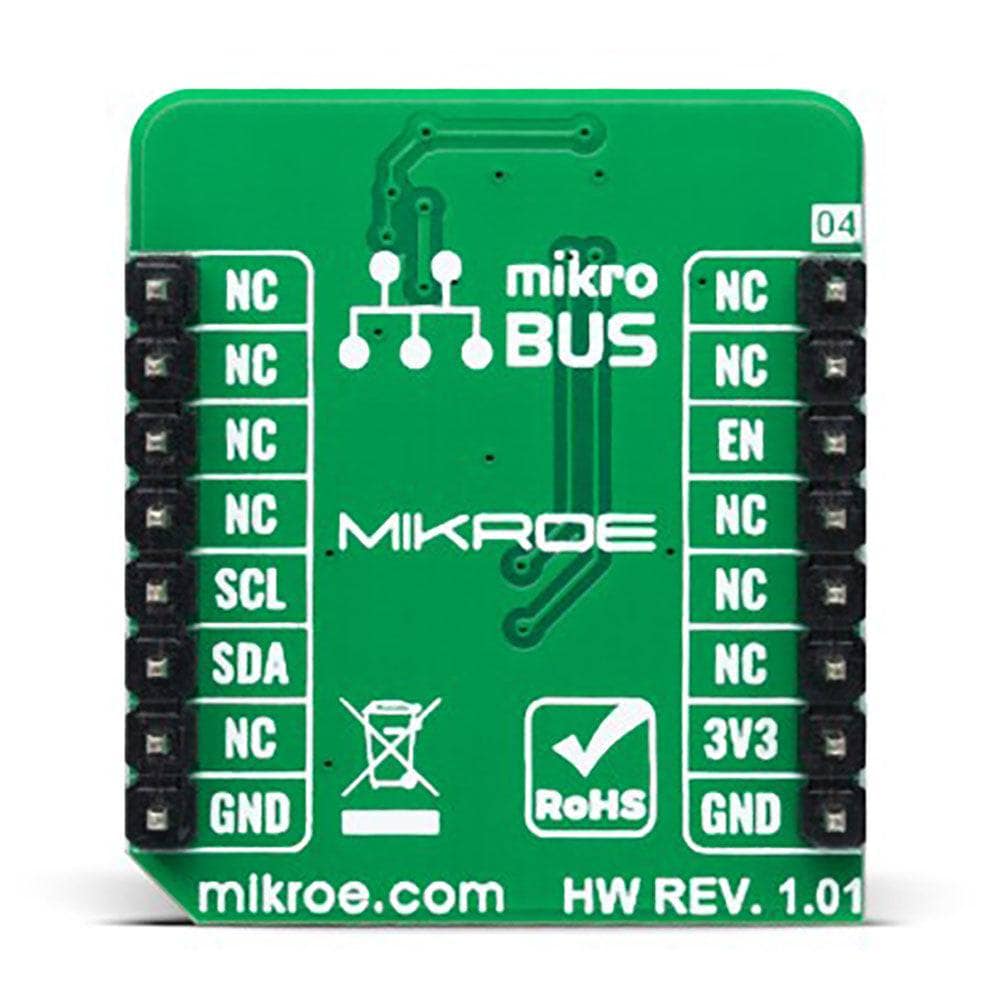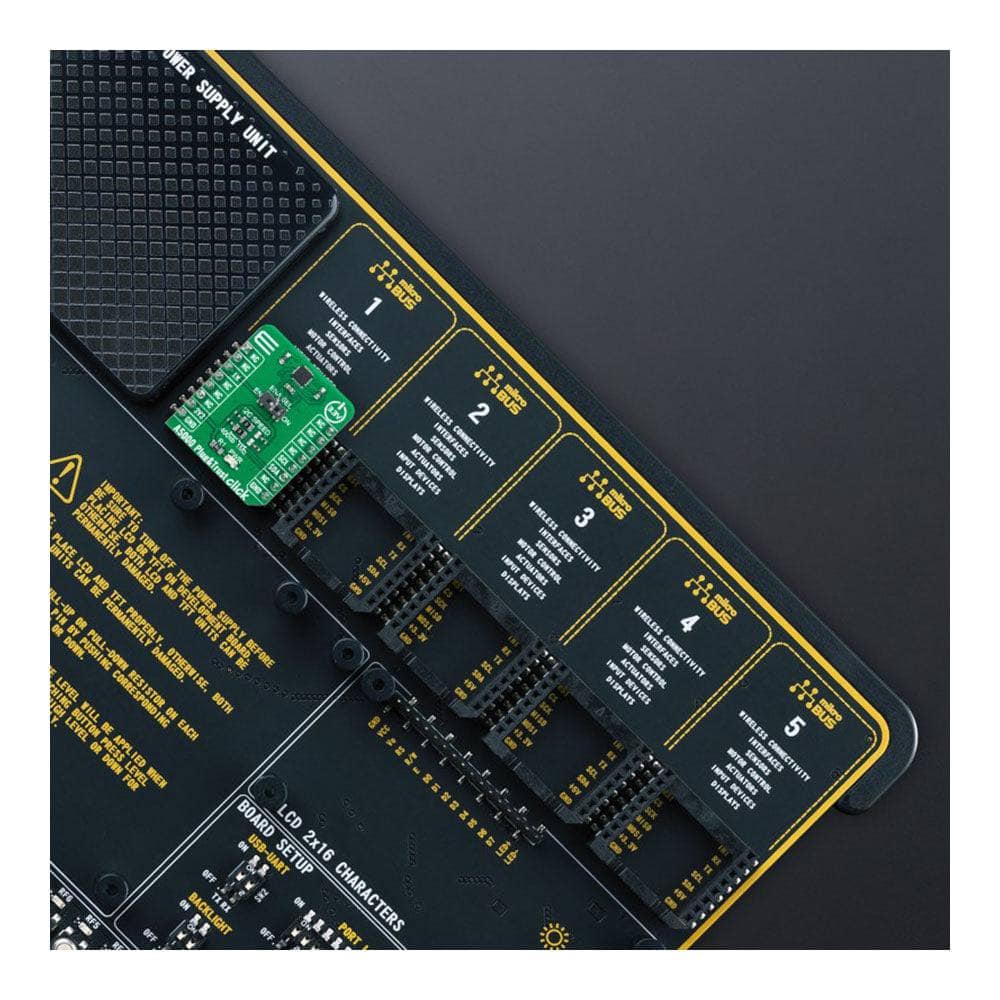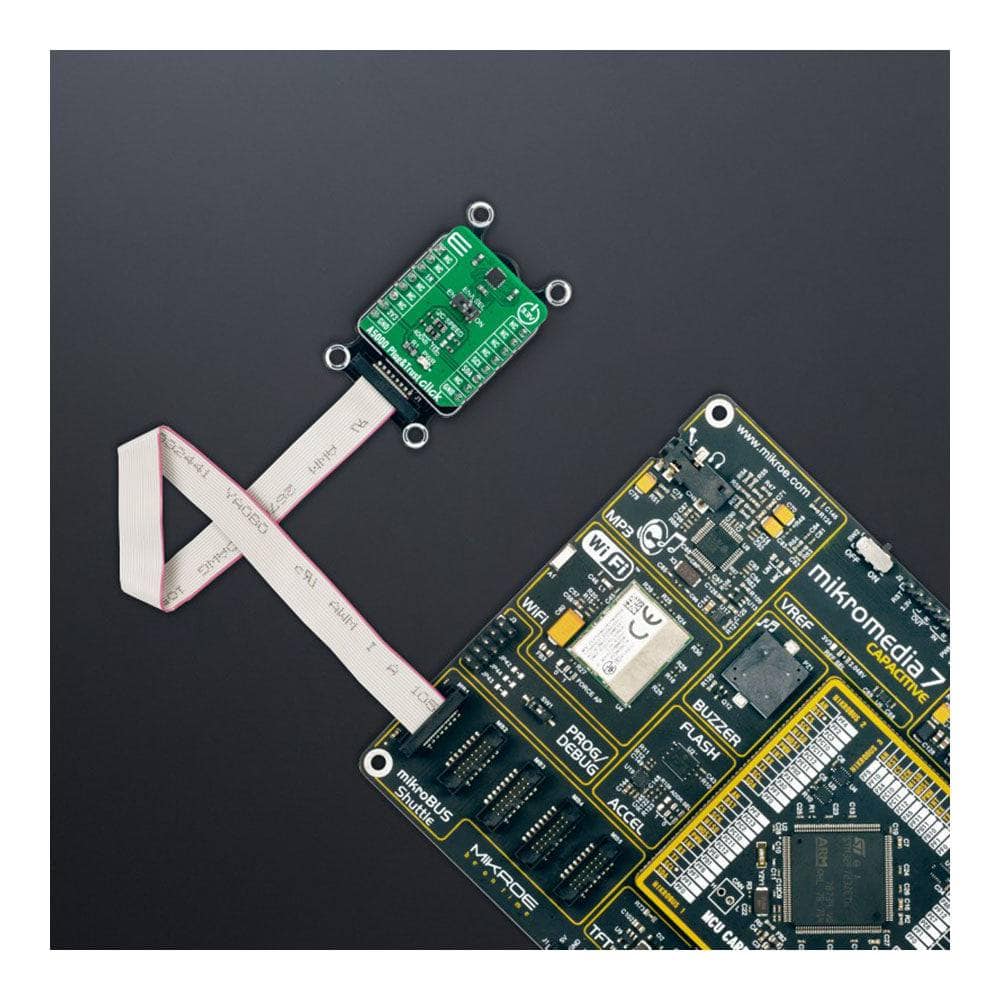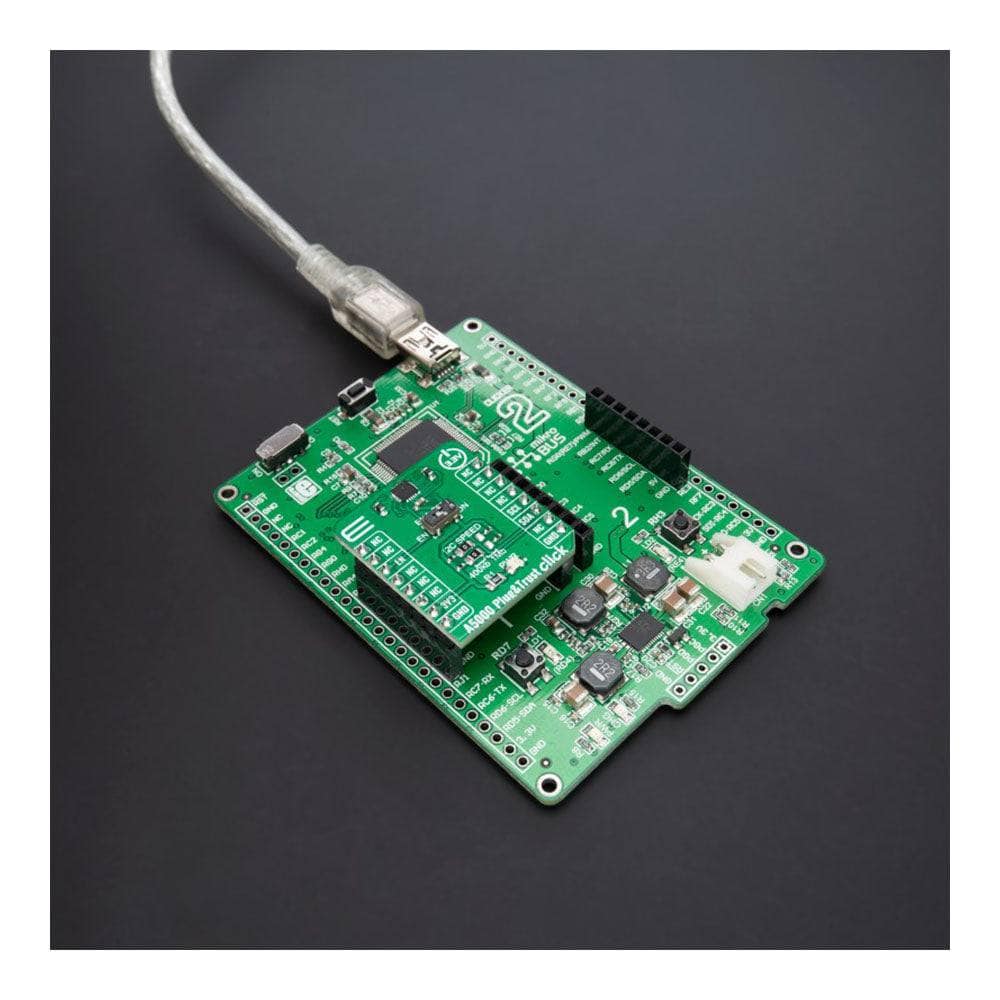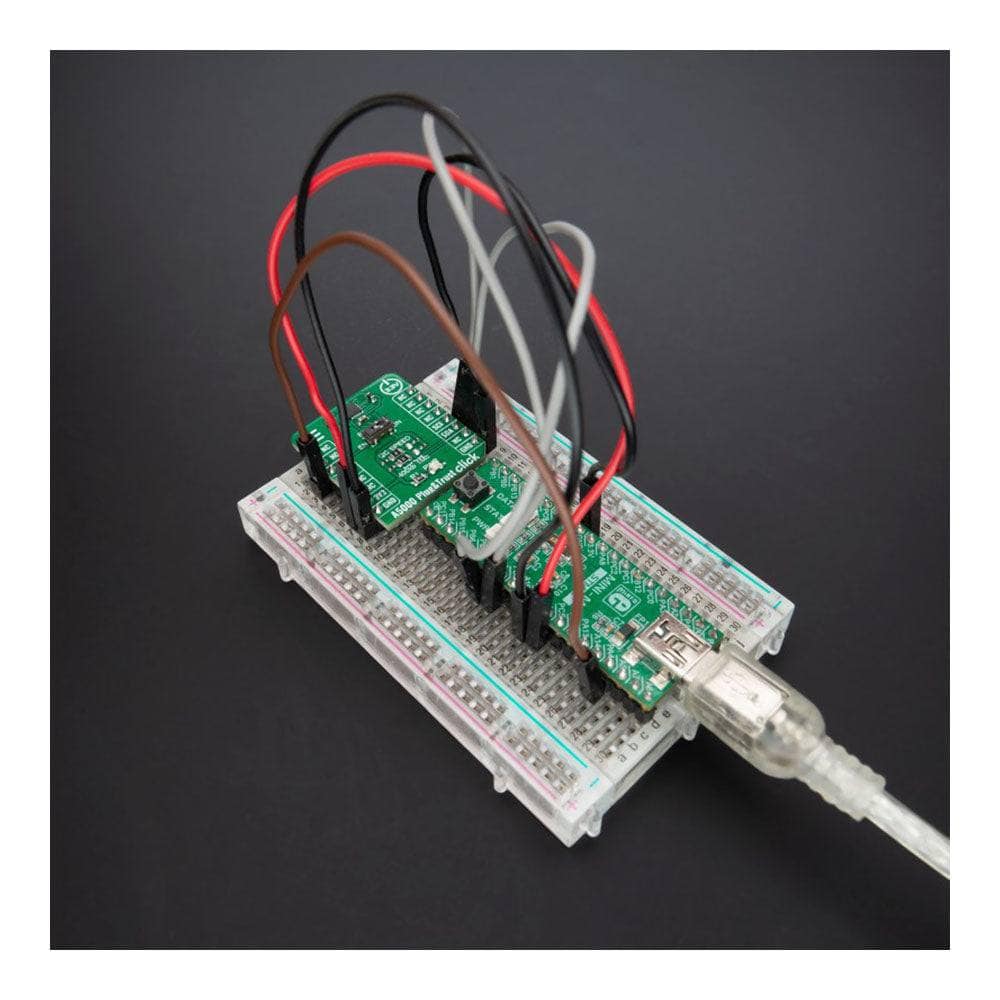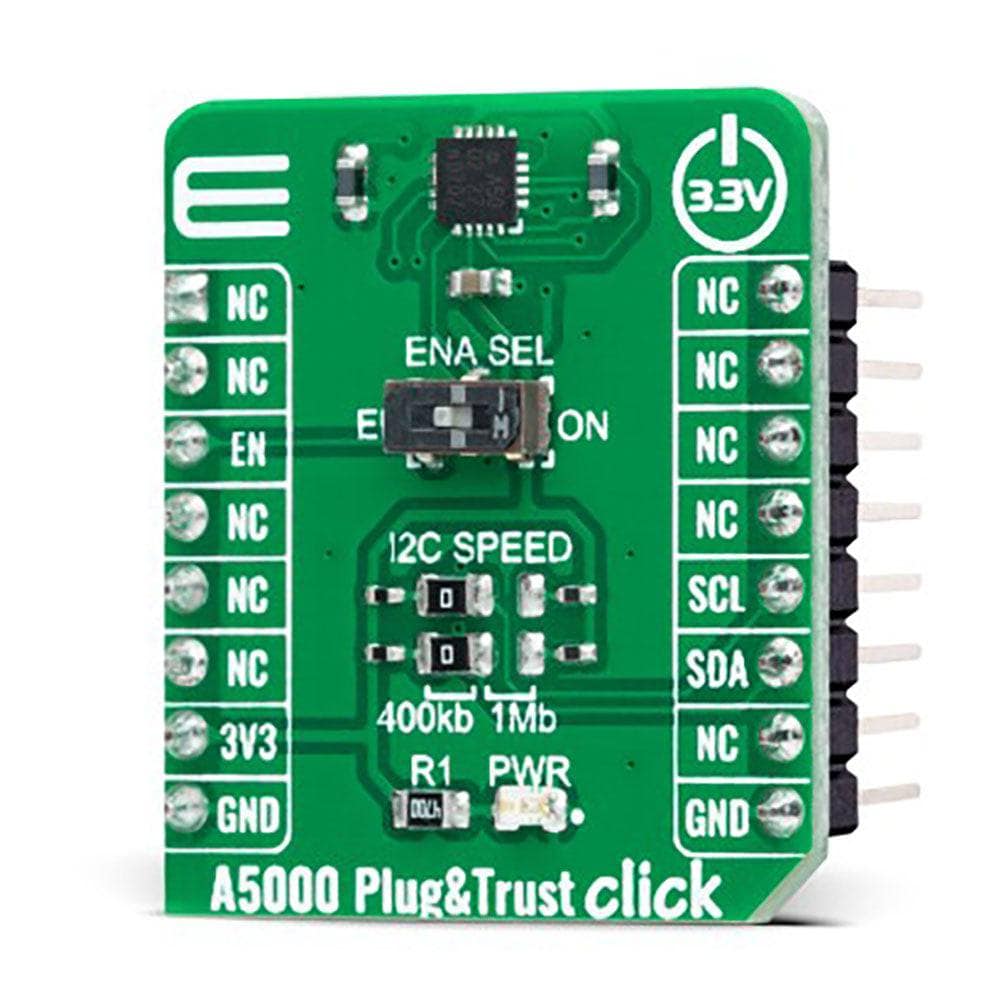
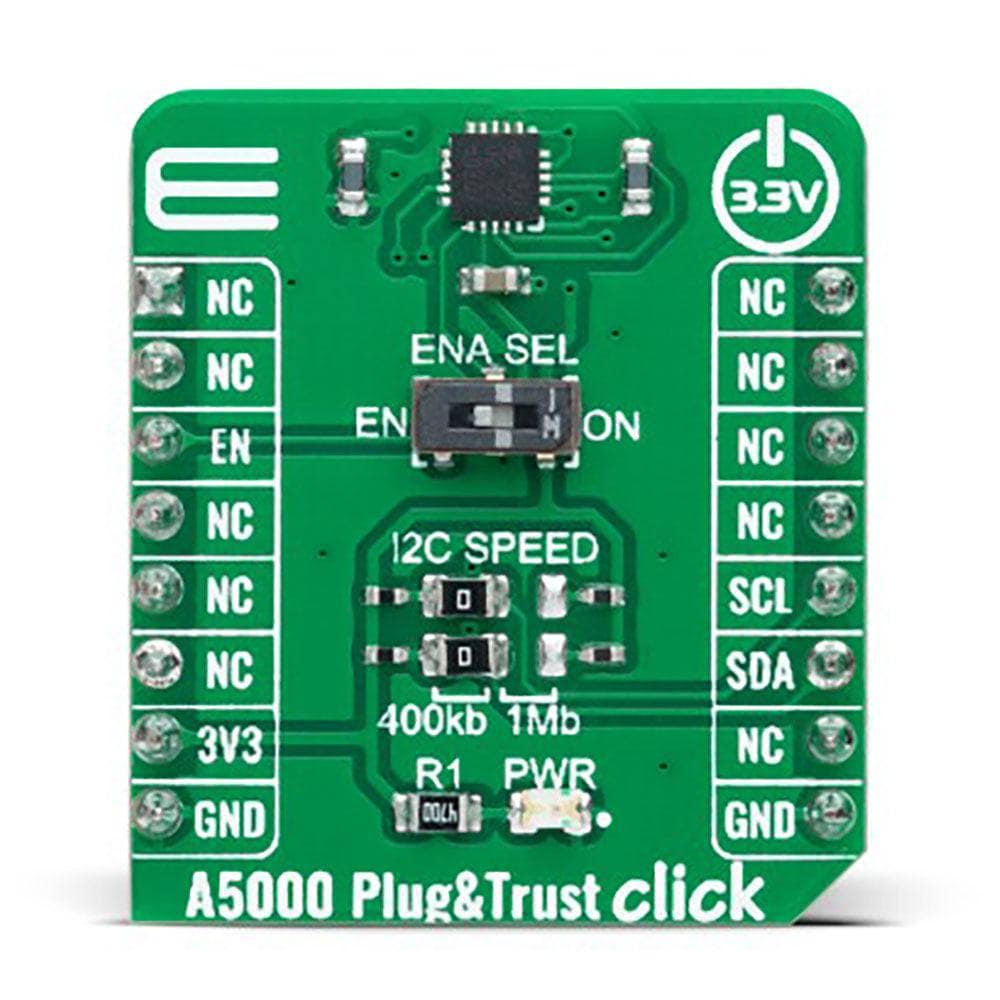
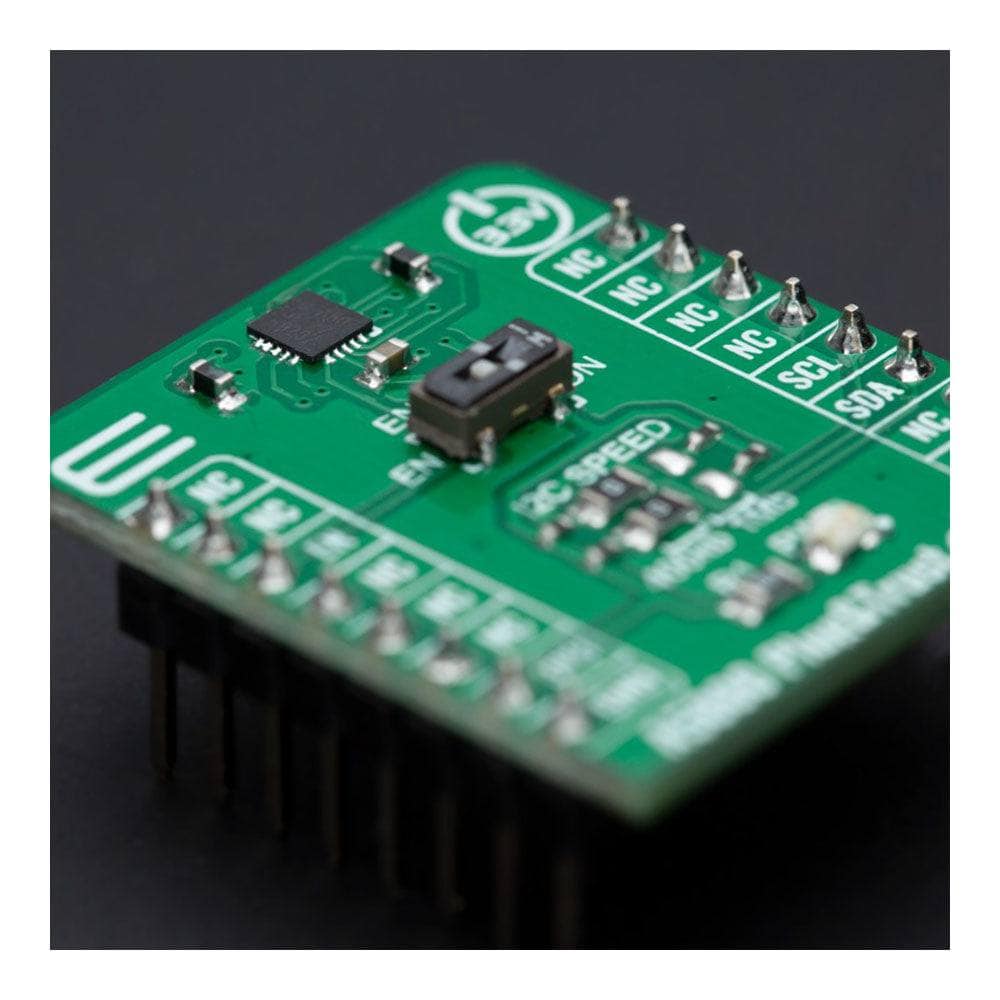
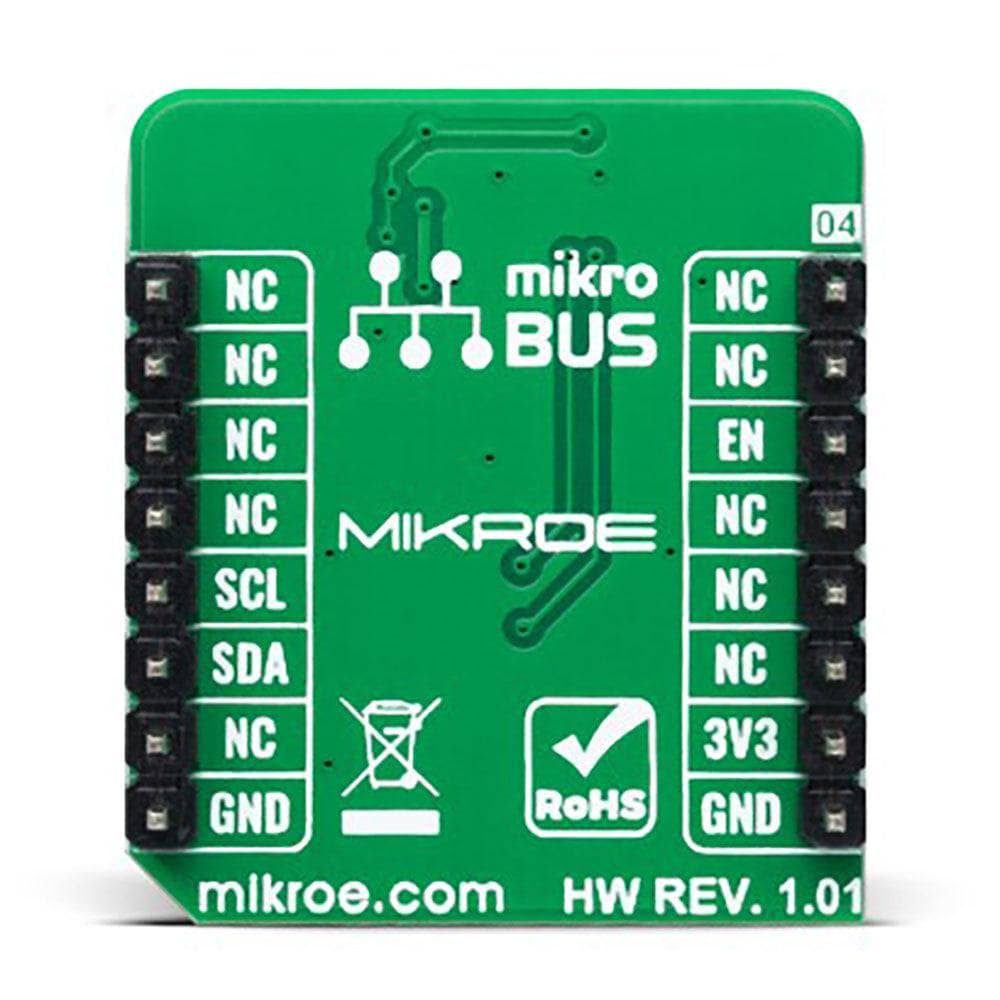
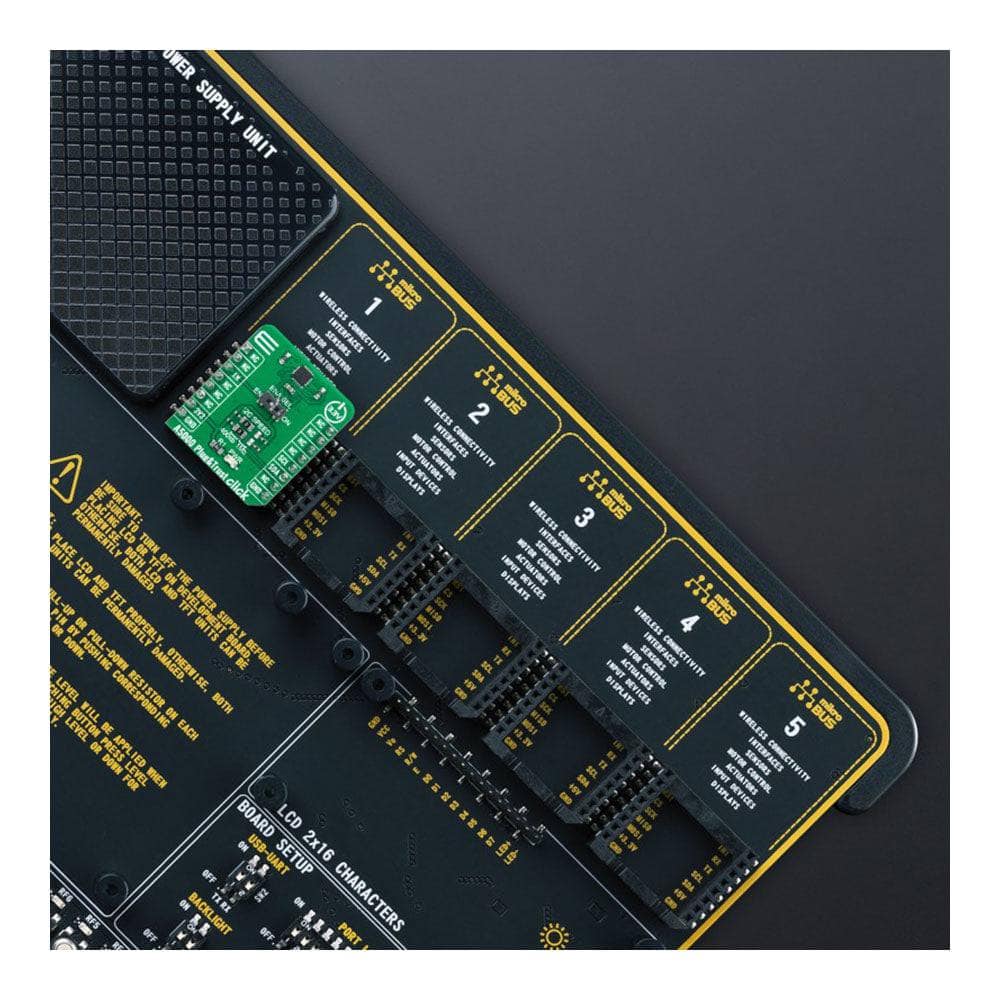
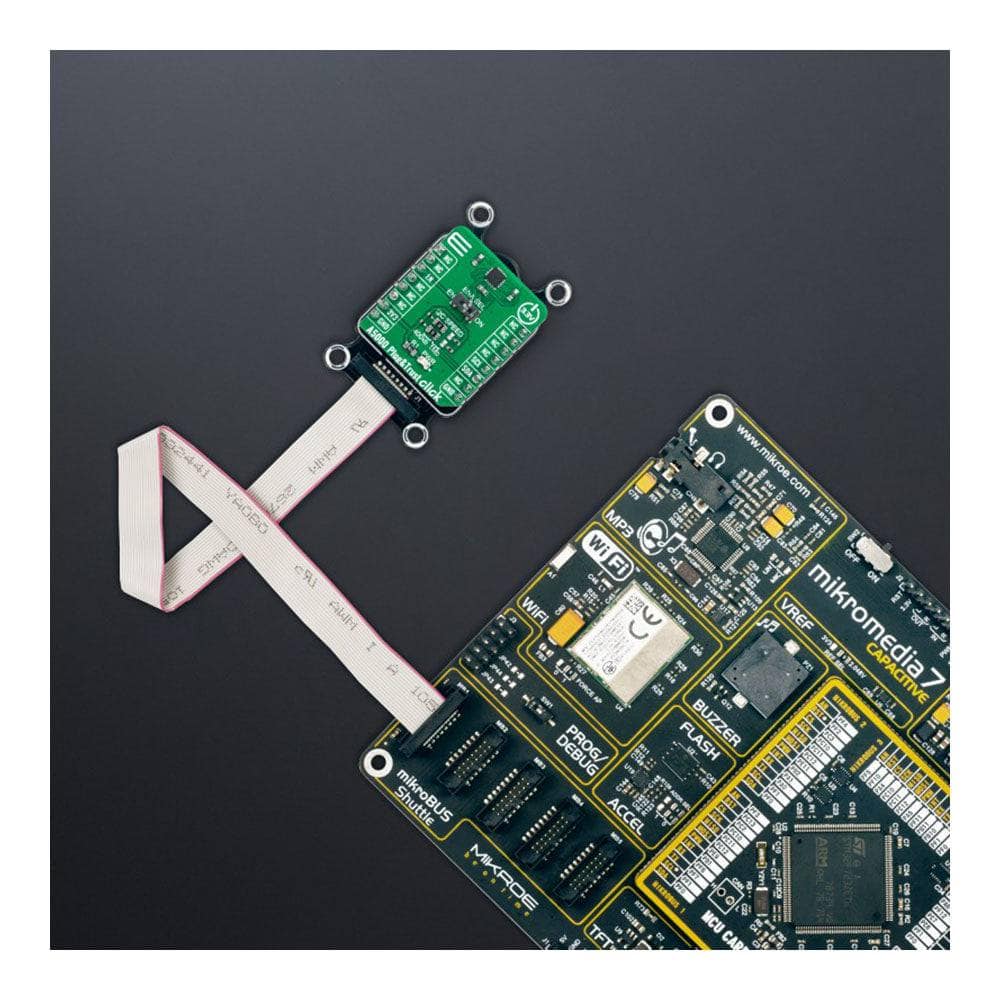
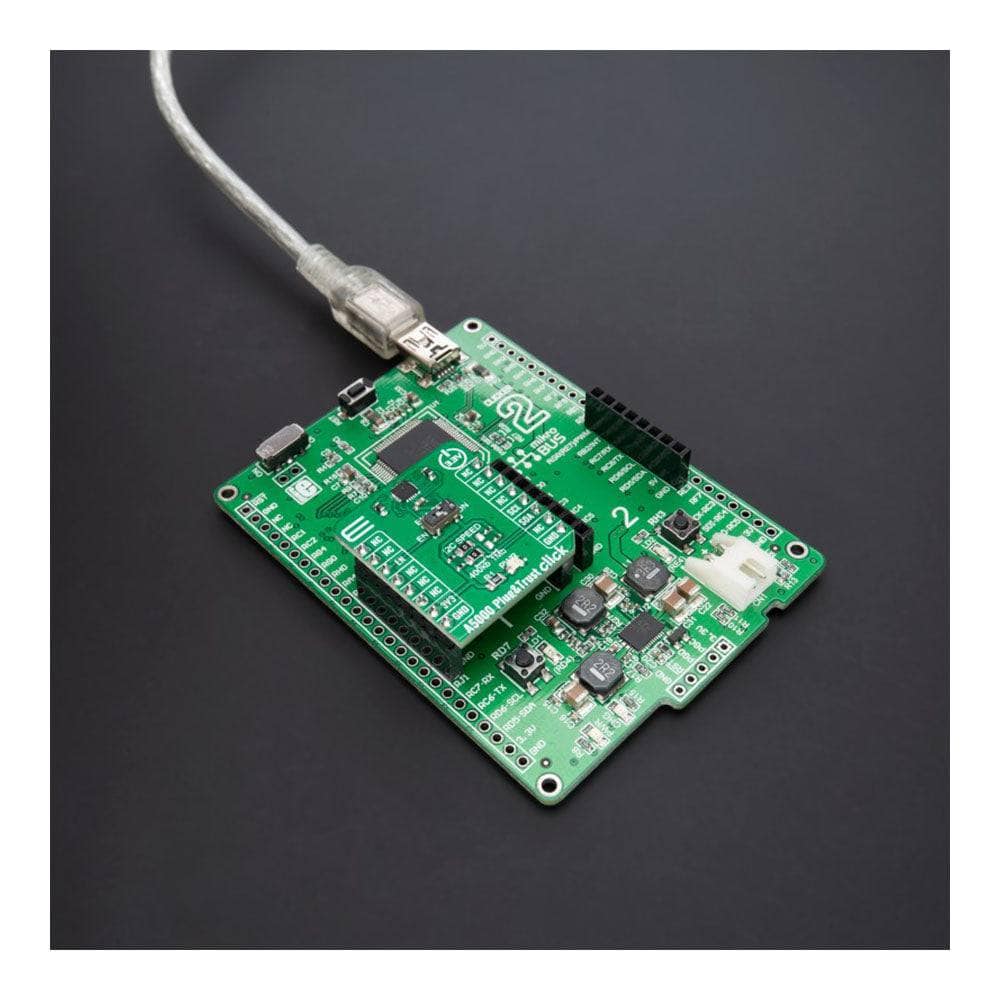
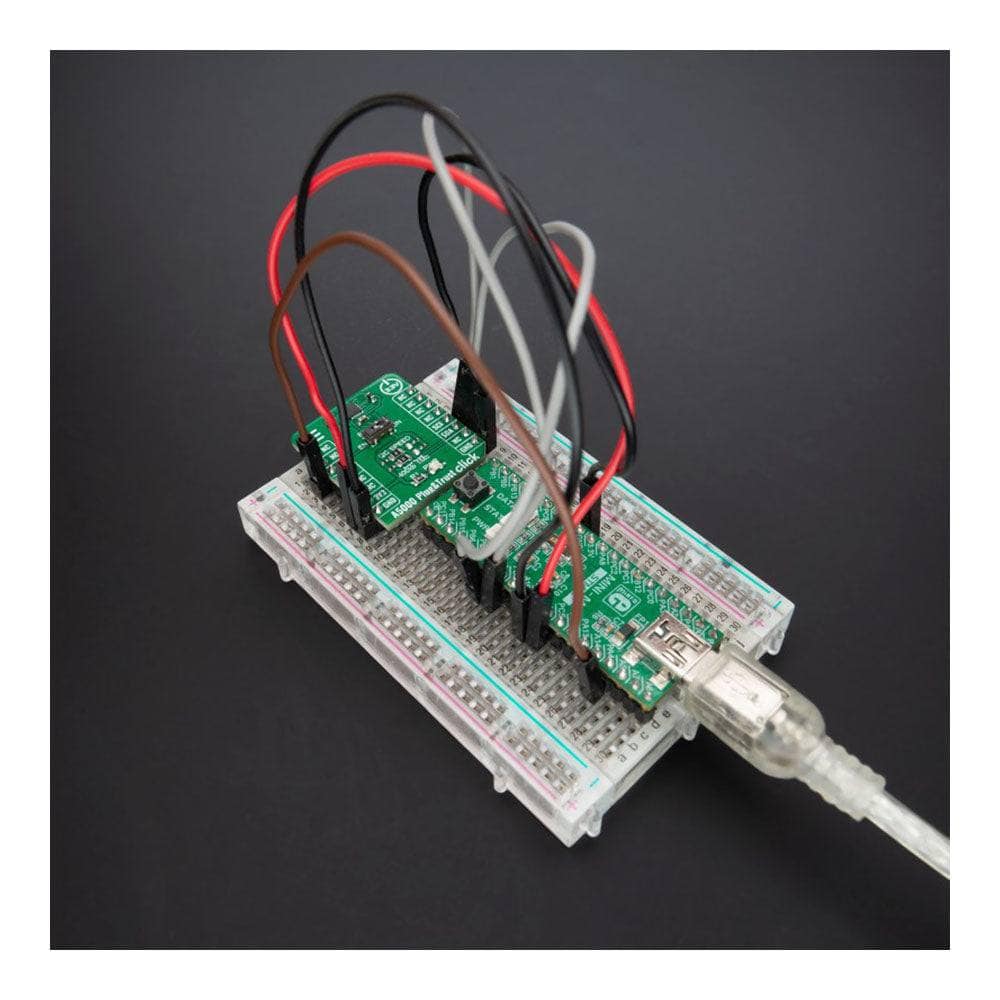
Key Features
Overview
The A5000 Plug&Trust Click Board™ is a compact add-on board representing a ready-to-use secure IoT authenticator. This board features the A5000, an Edge Lock® Secure Authenticator from NXP Semiconductors. The A5000 provides a root of trust at the IC level, giving an IoT authentication system state-of-the-art security capability. It allows for securely storing and provisioning credentials and performing cryptographic operations for security-critical communication and authentication functions. It has an independent Common Criteria EAL 6+ security certification up to OS level and supports ECC asymmetric cryptographic and AES/3DES symmetric algorithms. This Click board™ is suitable in IoT security use cases such as secure connection to public/private clouds, device-to-device authentication, or counterfeit protection.
The A5000 Plug&Trust Click Board™ is supported by a mikroSDK-compliant library, which includes functions that simplify software development. This Click board™ is supplied as a thoroughly tested product, ready to be used on a system equipped with the mikroBUS™ socket.
Downloads
How Does The A5000 Plug&Trust Click Board™ Work?
The A5000 Plug&Trust Click Board™ is based on the A5000, a secure IoT authenticator based on Integral Security Architecture 3.0™ from NXP Semiconductors, providing secure and efficient protection for authentication and anti-counterfeit use cases. This Click board™ is designed to be part of an IoT system; works as an auxiliary security device attached to a host MCU. A Common Criteria EAL6+ certification proves the efficiency of the security measures. It is ideal for many authentication use cases without the need to write security code and comes with ECC asymmetric cryptographic and AES/3DES symmetric algorithms support to protect the A5000 even against sophisticated non-invasive and invasive attack scenarios.
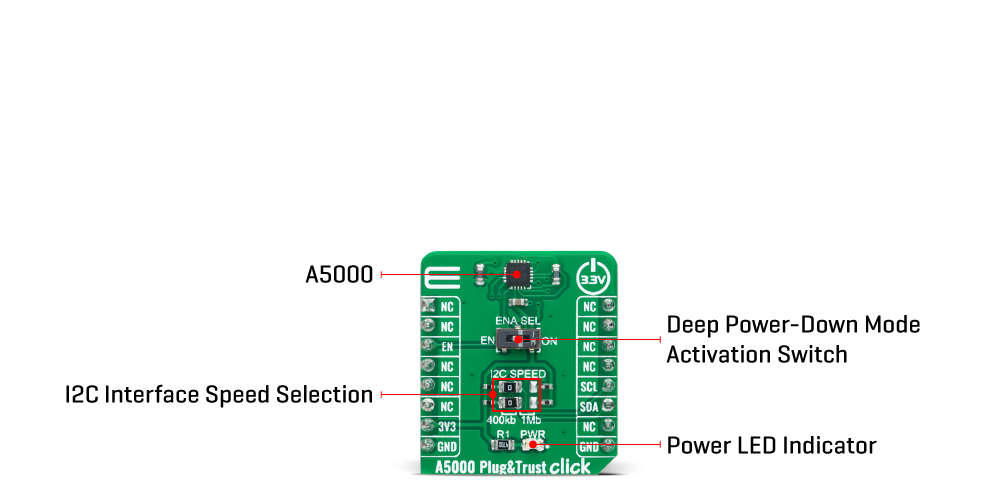
The A5000 operates autonomously based on an integrated Java Card operating system and a full-fledged authentication applet. The Authentication Applet features a generic file system that stores secure objects and associated privilege management. Direct memory access is possible only by the NXP Authentication applet's fixed functionalities. With that, the content from memory is fully isolated from the host system.
The A5000 Plug&Trust Click Board™ communicates with MCU using the standard I2C 2-Wire interface. The communication with the A5000 authenticator follows a command/response concept. It means that after sending the entire command to the authenticator, all data must be retrieved fully to allow sending of the following command. This board also allows the user to select the appropriate I2C communication speed by onboard SMD jumpers labelled as I2C SPEED to a proper position marked as 400Kb and 1Mb. Note that all the jumpers must be lined to the same side, or else the Click board™ may become unresponsive.
Besides, the A5000 provides a special power-saving mode offering maximum power saving. The way of activation of this mode is realized with the onboard switch marked as ENA SEL. In this way, Power-Saving Mode can be activated via the EN pin, routed to the CS pin of the mikroBUS™ socket, primarily by placing the switch to the EN position and then pulling the EN pin to a logic zero level. By placing the switch in the second position marked as ON, the A5000 is in normal operation mode.
The A5000 Plug&Trust Click Board™ can be operated only with a 3.3V logic voltage level. The board must perform appropriate logic voltage level conversion before using MCUs with different logic levels. However, the Click board™ comes equipped with a library containing functions and an example code that can be used, as a reference, for further development.
SPECIFICATIONS
| Type | Encryption,IoT security |
| Applications | Can be used in IoT security use cases such as secure connection to public/private clouds, device-to-device authentication, or counterfeit protection |
| On-board modules | A5000 - secure IoT authenticator from NXP Semiconductors |
| Key Features | Based on Integral Security Architecture 3.0™, secure and efficient protection for authentication and anti-counterfeit use cases, Common Criteria EAL6+ certification, ECC asymmetric cryptographic and AES/3DES symmetric algorithms support, Deep Power-Down Mode, and more |
| Interface | I2C |
| Compatibility | mikroBUS |
| Click board size | S (28.6 x 25.4 mm) |
| Input Voltage | 3.3V |
PINOUT DIAGRAM
This table shows how the pinout of the A5000 Plug&Trust Click Board™ corresponds to the pinout on the mikroBUS™ socket (the latter shown in the two middle columns).
| Notes | Pin |  |
Pin | Notes | |||
|---|---|---|---|---|---|---|---|
| NC | 1 | AN | PWM | 16 | NC | ||
| Deep Power-Down Mode | EN | 2 | RST | INT | 15 | NC | |
| NC | 3 | CS | RX | 14 | NC | ||
| NC | 4 | SCK | TX | 13 | NC | ||
| NC | 5 | MISO | SCL | 12 | SCL | I2C Clock | |
| NC | 6 | MOSI | SDA | 11 | SDA | I2C Data | |
| Power Supply | 3.3V | 7 | 3.3V | 5V | 10 | NC | |
| Ground | GND | 8 | GND | GND | 9 | GND | Ground |
ONBOARD SETTINGS AND INDICATORS
| Label | Name | Default | Description |
|---|---|---|---|
| LD1 | PWR | - | Power LED Indicator |
| JP1-JP2 | I2C SPEED | Left | I2C Speed Selection 400Kb/1Mb: Left position 400Kb, Right position 1Mb |
| SW1 | ENA SEL | Left | Deep Power-Down Mode Activation Switch EN/ON: Left position EN, Right position ON |
A5000 PLUG&TRUST CLICK ELECTRICAL SPECIFICATIONS
| Description | Min | Typ | Max | Unit |
|---|---|---|---|---|
| Supply Voltage | - | 3.3 | - | V |
| User Memory | - | - | 8 | kB |
| I2C Interface Speed | 400 | - | 1000 | kHz |
| Operating Temperature Range | -40 | +25 | +105 | °C |
| General Information | |
|---|---|
Part Number (SKU) |
MIKROE-5391
|
Manufacturer |
|
| Physical and Mechanical | |
Weight |
0.02 kg
|
| Other | |
Country of Origin |
|
HS Code Customs Tariff code
|
|
EAN |
8606027387098
|
Warranty |
|
Frequently Asked Questions
Have a Question?
Be the first to ask a question about this.

